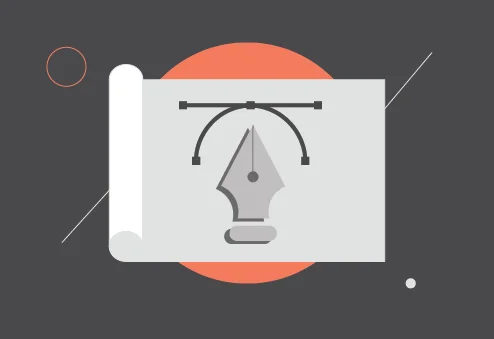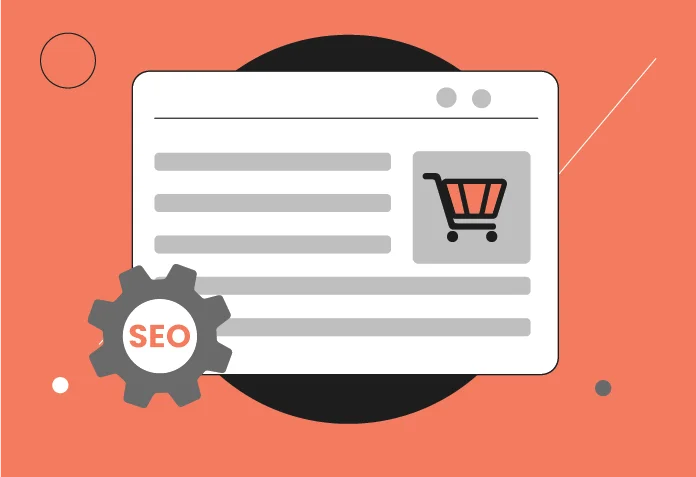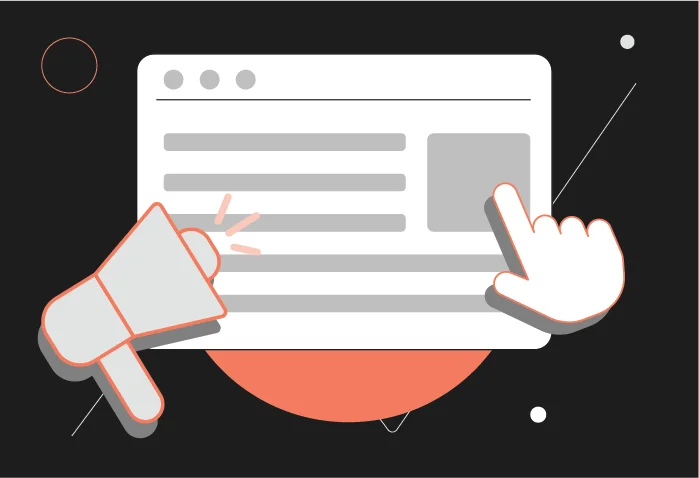Ever notice how some online experiences practically pull you in, making you click, scroll, and even smile at your screen? That’s what interactive content does, it brings a spark of life to an otherwise static digital world. You might see a quiz asking which classic movie character you resemble or a playful poll about your favorite midnight snack. Seems simple on the surface, but these tiny interactions can shape entire campaigns. In fact, 81% of marketers agree that interactive content grabs attention more effectively than static content. Why? Because people don’t just want to consume content; they want to participate. Let’s explore how this idea unfolds and why it’s shaking up the marketing scene in ways that are anything but predictable.
What Makes Interactive Content So Engaging?
Some folks swear it’s the novelty factor, the same kind of thrill you get from picking up a new gadget.
I’ve heard others insist it’s about control, being able to shape your own experience rather than passively absorbing a message. Both perspectives have some truth.
When you press buttons, slide toggles, or see real-time changes on the screen, you become part of the story. Interactive content can boost conversion rates more effectively than passive content, proving that active engagement leads to higher conversions.
One thing people rarely think about is the emotional punch that comes from interactive experiences.
If you’re asked a question—maybe something as silly as “Which mythical creature matches your Monday morning mood?”—it taps into that part of you that enjoys play.
It breaks the monotony and reminds you that behind every smartphone and browser, there’s a human looking for a moment of connection.
Does that always translate into higher sales or more sign-ups? Not guaranteed.
But it often fosters brand loyalty in a way that’s tough to replicate with static text alone.
Another thing people forget is how data collection sneaks in.
The moment you respond to a poll or answer quiz questions, marketers get goldmine-level insights without you feeling like it’s a chore. Whether it’s a playful skin tone matcher or a “What’s Your Beauty Personality?” quiz, a well-crafted interactive tool from a savvy beauty marketing agency can turn casual browsers into loyal brand advocates.
How Quizzes, Polls, and Games Capture Attention
You’ve probably stumbled upon at least one personality quiz claiming to tell you which city vibes with your inner soul or which dessert you’d be if you came back in your next life. Or maybe even what kind of fitness trampoline best suits your energy level. Silly? Sure. But they grab attention like nothing else. Why? Because humans love learning about themselves, even if it’s through a quick online game. A good mobile game monetizator knows how to use this curiosity to keep players engaged and coming back.
There’s a deeper reason these tools are powerful. Real-time feedback creates a feedback loop. You answer, you get immediate results, and it feels tailor-made for you. In a noisy online environment—where every website yells for your attention—this feels personal. It’s like having a conversation rather than getting preached at.
Speaking of personal, think of polls that gauge public sentiment on a hot topic. People love sharing opinions. Whether it’s about the best pizza topping or the next big tech trend, we all enjoy weighing in.
A well-placed poll not only entertains but also gathers crowd-sourced knowledge. Marketers then look at these responses and think, “So that’s what my audience really wants.” It’s like having a free focus group on demand, minus the stale coffee and conference room vibe.
Where Most Marketers Go Wrong with Interactive Elements
Sometimes, marketers get so excited about adding interactive bells and whistles that they forget the audience’s perspective. You’ll find quizzes that take forever to load or polls that look cramped on a phone screen. Nothing makes a potential fan bail faster than a clunky user experience. The best interactive pieces are as smooth as a well-rehearsed magic trick: it happens quickly, it’s visually appealing, and before you know it, you’re at the “big reveal.” Choosing the right quiz creator can help ensure your content runs smoothly and keeps users engaged.
Another pitfall is forcing participation. You’ve likely seen those pop-ups that won’t go away until you take a survey. That doesn’t foster real engagement; it just irritates folks who’d prefer to browse in peace. Instead, a subtle invitation to join is usually enough. Think about those social media polls or casual call-outs in a blog post. When done right, the interactive element feels like an organic part of the content rather than a forced marketing tactic.
Let’s not forget about context. If you’re rolling out an interactive infographic for a financial services blog, it needs to match the tone and audience expectations. A random poll about favorite pizza toppings on a serious banking site could confuse readers (unless there’s a clever angle hidden there, which is rare). The trick is to make your interactive piece relevant—tie it back to your main topic in a way that feels natural. If it’s shoehorned in, people notice, and the trust you’ve built might slip away.
Ways to Include Interactive Content for a Bigger Audience Reach
- Embed Interactive Videos:
Video is already a potent format, but adding clickable overlays, choose-your-reaction buttons, or a quick poll mid-video can transform casual viewers into active participants. It’s like having a conversation with your audience instead of just talking to them. You can see how this plays out in everyday life when people watch live streams and type comments in real-time, creating a communal vibe. - Use Calculators or Custom Tools:
Ever hopped on a site that lets you calculate something specific—like how many cups of coffee you consume in a year or how much money you could save by switching a service? These tools do more than show numbers. They offer immediate, personalized insight. That’s a big deal because it feels like a one-on-one consultation rather than a mass-produced advertisement. - Gamify Learning Modules:
Not only do quizzes and puzzle-like elements make information stick, but they also turn educational content into entertainment. Some training programs include small challenges that reward users with badges or progress bars. An AI quiz maker can help create these engaging challenges quickly and easily. People keep coming back to ‘level up’ because it scratches that part of our brains wired to chase little victories. - Incorporate Social Sharing Features:
What’s the point of an awesome interactive quiz if nobody sees your results? Sharing results alongside the best digital business card can boost visibility and professional credibility instantly. Let people share outcomes on social media. It’s practically free promotion for your digital campaign. Someone takes your quiz, laughs at the result, and clicks “Share.” Instantly, their friends see it and wonder, “Hmm, what would I get?” A chain reaction starts, and now you’ve got a bunch of curious onlookers heading to your site.
Why Interactive Content Should Be Part of Your Brand Strategy
Something that often gets overlooked is the emotional connection formed when audiences actively engage with your material. A static blog post may deliver info, but an interactive experience invites readers to shape how they receive it. That’s a game-changer in a world where brand loyalty is often the difference between sinking and swimming.
Brands spend huge resources on ad analysis, trying to decode what resonates with their target audience. Interactive content streamlines that process by giving you live feedback. If users drop off mid-quiz, you might need to refine your questions. If they share your poll results like wildfire, you’ve struck a chord. It’s almost like a real-time temperature check on your market’s preferences.
There’s also an element of storytelling here. Picture a branching scenario in which each decision leads to a different outcome—like a mini-narrative your audience co-creates. That’s not just marketing; it’s entertainment. People love stories, especially when they have some influence over the storyline. Integrating interactive content into your brand strategy means weaving customers into your brand narrative. They no longer stand on the sidelines; they’re in the thick of it, shaping how the story ends.
How to Keep Interactive Experiences Real and Engaging
Be Authentic:
If your content feels gimmicky or desperate, people sense it right away. Make sure the interactions have a clear purpose. Maybe it’s to educate, maybe it’s to delight—but it should feel genuine and align with your overall brand strategy.
Focus on Value:
A fun quiz is nice, but a fun quiz that helps someone decide the best approach to a real problem is even better. For instance, if you’re in health and wellness, create a personalized fitness roadmap quiz. Don’t just aim for clicks; aim for clicks that mean something in the reader’s world.
Test and Refine:
Run beta versions of your interactive features. Let real users try it, and note where they hesitate or bounce. Tiny tweaks—like changing a question or rearranging steps—can dramatically increase engagement.
One Question for the Future: Will Interactive Content Keep Evolving?
It’s funny how quickly we adapt. Ten years ago, the idea of chatbots was borderline sci-fi. Now, they’re so routine that most of us don’t even flinch when one pops up to ask if we need help finding something. So, what does this all mean for interactive content? Honestly, we’re probably just scratching the surface.
New tools might let us create immersive 3D quizzes or real-time augmented reality experiences. Or maybe we’ll circle back to simpler forms of interactivity because people crave authenticity more than shiny tech gimmicks. Human behavior is never entirely predictable.
I’ve seen marketing experts argue both sides: one group swears we’re heading toward hyper-immersive digital realms, while the other predicts a return to basics as audiences get overloaded with complex interactive trends. Could both be right, in different niches? Possibly. The world is big enough for multiple truths. One thing is certain: audiences have tasted what it’s like to participate rather than just observe, and that appetite won’t be going away. Whether it’s a choose-your-own-adventure blog post or a fancy augmented reality ad that lets you virtually try on sneakers, people want to be part of the action.
Final Thoughts: Is It Worth the Hype?
Some folks might shrug and say interactive content is just a fad. They’ll tell you people will get bored and move on to the next shiny thing. But look at how we communicate. We chat in real time, react with emojis, and leave comments. The days of one-way broadcasting are fading. Interactive content taps into this desire for dialogue and participation. It’s not about slapping a quiz onto your site just for kicks—it’s about reimagining how you connect with an audience that’s becoming more discerning each day.
At the end of the day, creating interactive experiences isn’t just a “nice to have”—it’s a non-negotiable if you’re aiming to stand out. Give people something they can touch, shape, or explore, and they’ll stick around longer. They might even share your content with friends, who then share it with their friends, and suddenly you’ve got a ripple effect across social platforms you never even planned for. Isn’t that the sort of organic buzz every marketer dreams about?
So yes, interactive content is worth the hype. It’s the next level of digital engagement, a tool that breathes life into campaigns by inviting users to be part of the narrative. And that’s something you can’t afford to ignore, especially when everyone’s competing for a single glance.
The question now is whether you’ll stick to the status quo or try something new—and maybe surprise yourself with just how far an interactive quiz, poll, or gamified experience can go. Because sometimes, the real power lies in letting your audience do more than watch. They want to play a part in the story, and it’s up to you to hand them the pen.




